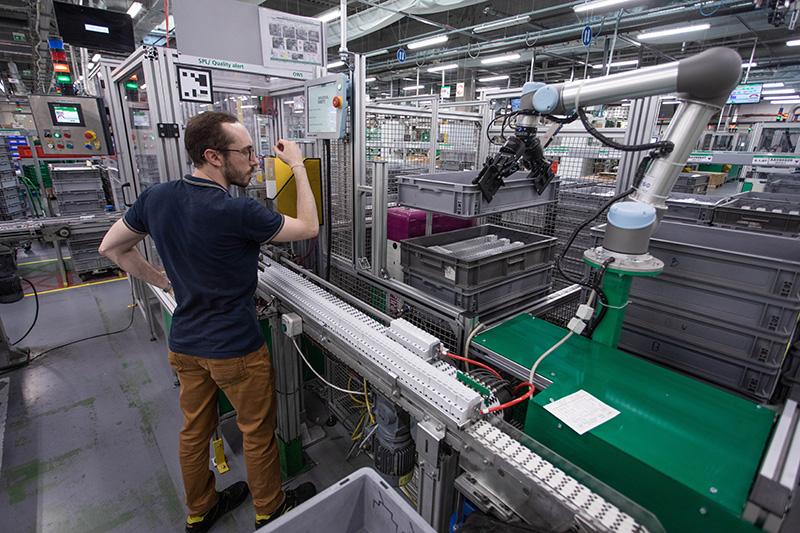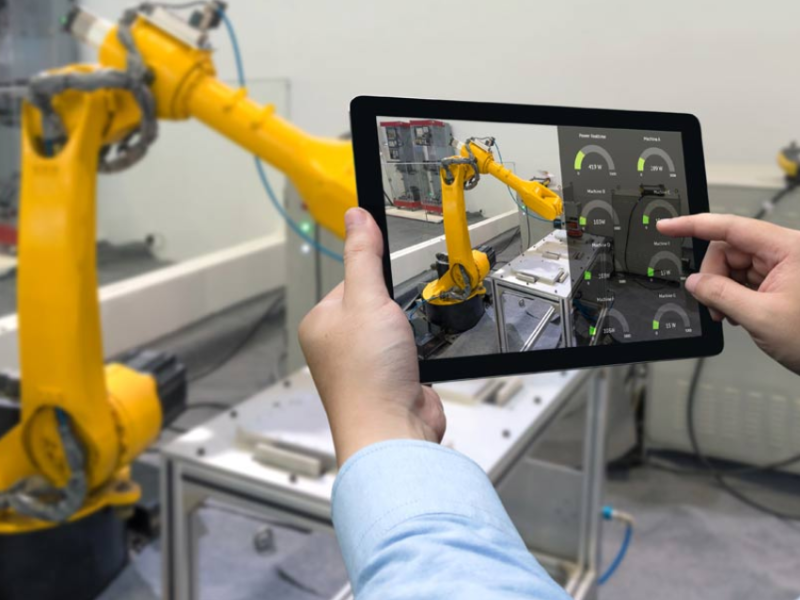Schneider Electric partnered with Universal Robots to free up staff’s time and enabled them to focus on value-adding tasks. Their plant in Bulgaria, predominantly focused on the production and assembly of mini circuit breakers, deployed two UR5 cobots to automate repetitive manual labour tasks, such as picking and placing power breakers and boxes.
Schneider Electric delivers solutions to homes, buildings, data centres, infrastructure, and industries, by combining energy technologies, real-time automation, software, and services. The plant employs more than 500 employees comprising of operators, administration, and support staff. “The cobots have been deployed to tackle non-ergonomic, repetitive, and boring daily tasks. This allows operators to be more focused on product quality and machine performance,” says Antoniy Petrov, automation engineer at Schneider Electric.
Bring in the ‘bots
An innovative company, Schneider Electric is constantly seeking out modern and reliable solutions to enhance its operations. The UR5 cobots from Universal Robots precisely deliver this – more efficient and productive operations.
“Our cobots were programmed to pick power breakers from the manufacturing line and place them into boxes,” explains Masayuki Mase, Country Manager for Universal Robots Oceania. “Once this task is completed, the cobot picks and places an empty box to be filled again, until the cart is filled with 10 boxes. Once the batch is finished, the cobot alerts the operator that it’s time for changeover.”
As one of the smallest cobots in the range, the UR5 is lightweight, flexible and tackles an array of tasks with ease. “It offers a reach of 850mm, a payload of 5kg, a footprint of 149mm and weighs in at just 20.6kg. This medium-duty robot integrates seamlessly and makes quick work of all tasks – as experienced at Schneider Electric.”
On this plant, the cobots follow processes like emergency stops. “The cobot can reject full conveyors to provide a safe working area for the operator to remove the units which are unfit for use. It can also alert the operator when changeover is needed, and handle manual requests from the operator to stop operation and move into a safe position,” Petrov explains.
The robot works fully autonomously, and the operator is only needed for the changeover. “The UR5’s return on investment in this particular setting is around 24 months.”
Speaking to the uptake of automation in the electronics and technology sector, Masa says: “We have seen strong demand across major sectors – including electronics and technology. COVID-19 highlighted the need for independent supply chains by local manufacturers.”
For more information, please visit www.universal-robots.com






